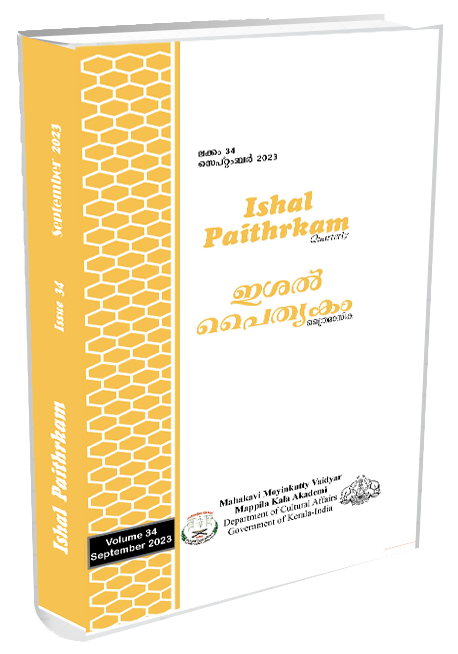Spaces of Power and Authority: Colonial Bungalows in Travancore
Keywords:
space, colonialism, architecture, symbols and authorityAbstract
In scholarly discourses the bungalow is frequently considered as an architectural form with a significant imperial import. At the same time the bungalows are a remnant of colonial life and cultural exchange between the natives and the British. Bungalow, in the colonial setting characterized the opposite of the more or less communal living that was exhibited in the urban and rural houses of a sizable number of Indian indigenous towns. While traditional home designs resembling bungalows do exist in West Bengal, Karnataka, and Kerala, their settings are not the same as those of British residents. This paper unravels historical and architectural symbols in Travancore that record a specific time and space under colonial regimes. It resembles symbols of power and centering authority in the social relations of colonial production of space.
Downloads
References
A, D. King. (1976). Colonial Urban Development: Culture, Social Power and Environment, London: Routledge and Kegan Paul.
A. D. King. (1976). Colonial Urban Development: Culture, Social Power and Environment, London: Routledge and Kegan Paul.
Airs Malcolm. (1998). The Tudor and Jacobean Country House: A Building History, Bramley: Sutton Publishing Ltd.
Amiya Jemeemah Hisham. (17 June 2019). “Bungalows of Travancore: A Study of the Architectural Typology.” Sahapedia. https://www.sahapedia.org/bungalows-travancore-study-architectural-typology.
Anthony D. King. (1995). The Bungalow: The Production of a Global Culture, New Delhi: Oxford University Press.
G. Germann. (1972). Gothic revival in Europe and Britain: sources, influences and ideas, London: Lund Humphries [for] the Architectural Association.
Henry Yule and A.C.Burnell. (2015). Hobson-Jobson The Definitive Glossary of British India, Oxford: Oxford University Press.
J. Pott. (1977). Old bungalows in Bangalore South India. W.H Houldershaw Ltd.
James Stevens Curl. (2006). The Oxford Dictionary of Architecture and Landscape Architecture, Oxford: Oxford University Press.
K. Ferry, Bungalows. (2014). London: Bloomsbury Publishing.
Kathryn Ferry. (2014). Bungalows, Oxford: Shire Publications.
Louise Ou werkerk, No Elephants for the Maharajah: Social and Political Change in Travancore 1921–1947, Delhi: Manohar Publishers and Distributors, 2011, pp. 50-72.
Lefebvre, Henri. (1991). The Production of Space. Oxford: Blackwell Publishing.
Manu S. Pillai. (2015). The Ivory Throne Chronicles of the House of Travancore, Noida: Harper Collins.
Miki Desai, Madhavi Desai. (2011). ‘The Colonial Bungalow in India’, the Newsletter, No. 57.
Miki Desai. (2011). Madhavi Desai, The colonial bungalow in India, The Newsletter, No. 57.
P. H. Davies. (1985). Splendours of the Raj: British architecture in India, 1660 to 1947. London: J. Murray
Peter Scriver. (1994). Rationalization, Standardization, and Control in Design: A Cognitive Historical Study of Architectural Design and Planning in the Public Works Department of British India, 1855-1901, Delft: Publikatieburo Bouwkunde, Technische Universiteit Delft.
R. G. Irving. (1981). Indian summer: Lutyens, Baker, and Imperial Delhi. London: Yale University Press.
Shanti Jayewardene-Pillai. (2007). Imperial Conversations: Indo-Britons and the Architecture of South India, Yoda Press.
Swati Chattopadhyay. (2000). ‘Blurring Boundaries: The Limits of “White Town” in Colonial Calcutta’. Journal of the Society of Architectural Historians. Vol. 59.
V. NagamAiya. (1999). The Travancore State Manual Vol. I, Thiruvananthapuram: Kerala Gazetteers Department.
Downloads
Published
Issue
Section
License
Copyright (c) 2025 ISHAL PAITHRKAM

This work is licensed under a Creative Commons Attribution-NoDerivatives 4.0 International License.

